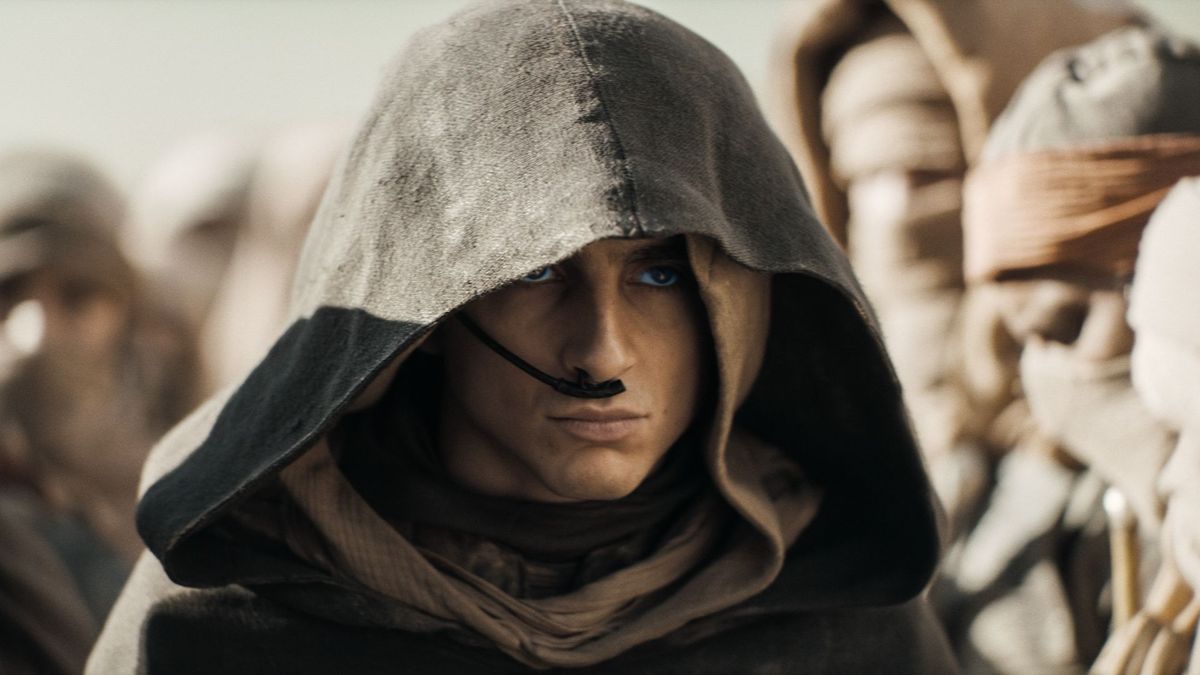
This Dune: Part Two article contains spoilers.
For most casual fans and hardcore spice addicts alike, Dune: Part Two is a triumph. Not only did Denis Villeneuve get to complete his visionary adaptation of the first Frank Herbert Dune novel (phew!) but he was also able to infuse his cinematic trip to Arrakis with modern sensibilities. For longtime fans, Dune: Part Two is not the most faithful filmed version of the first book, but it’s much closer to the text than the 1984 version and feels bigger and grander than the (more faithful) 2000 miniseries version. To put it simply, Dune: Part Two, combined with Part One, is (probably) the best-filmed version of Dune we’re likely to ever get. Fidelity to a book is never entirely possible with adaptations, nor is it necessarily desirable. As Villeneuve told Den of Geek back in 2021: “When you adapt it’s an act of vandalism. You will change things.”
Yes, Villeneuve makes some pretty huge changes to Herbert’s original story, but none as huge as how he handles Paul Atreides’ destiny. Let’s look at the one alteration from the novel that is probably more important than all the other changes combined.
While much has been made of the way Dune: Part Two revises the arc of Chani (Zendaya), and the fact that Alia (briefly, Anya Taylor-Joy) is simply not born in this version of Dune, we’ve all been collectively less obsessed with the way the movie changes the geographical journey of Paul Atreides. In fact, Paul’s deliberate choice to first avoid “the south” and then, actively go into the south and seek the “southern fundamentalists,” is an invention of the movie, and you won’t find it in the original Herbert novel at all.
To be clear, the book does mention “the southern regions” and “southern reaches” a few times. But, these moments have nothing to do with a sect of specifically more fanatical Fremen. On page 234 (in the current Kindle edition), Kynes lies to Jessica, feigning knowledge of the southern area, saying “Very little’s known of the deep desert. And almost nothing of the southern region.” And then, much later (page 746 of the Kindle version), the Emperor needles the Baron about the southern regions, saying, “Tell me, my dear Baron, have you investigated the southern polar regions of Arrakis?” This second moment is replicated in Dune: Part Two pretty faithfully, at the start of the last 30 minutes of the movie, when Christopher Walken’s Emperor rasps, “Baron, do you have any idea who this Muad’Dib could be?” And then, in the same scene, says, as in the book, “Baron, have you ever investigated the south regions of Arrakis?”
In the book, the idea is that the Harkonnens have vastly miscalculated the population of the Fremen in general. Because they believed nobody could survive in the southern regions, countless Fremen were able to overpower the Harkonnens. But the movie takes this all one step further by creating a group of wildly religious Fremen in the south who are more inclined to follow Muad’Dib and his holy war than other non-southern Fremen.
In Dune: Part Two, about 20 minutes in, Shishakli (Souheila Yacoub) puts it like this: “These are old southern beliefs…Southern tribes believe a messiah will come and deliver us from evil.” After Paul learns of these Southern Fundamentalists, he actively fears his own future visions of what will happen if he radicalizes the faithful. This is broadly true to the book, but the word “Fundamentalists” appears nowhere, not one time, in the novel Dune. The idea of galvanizing the south is a matter of numbers, rather than ideology. And that’s because, in the book, we’re meant to believe that the sneaky work of the Bene Gesserit’s Missionaria Protectiva program was comprehensive, that almost all the Fremen are indoctrinated with the legend of the Lisan al-Gaib, not just specific sects of them.
In Dune: Part Two, we, notably, don’t meet many southern Fremen as characters per se, save for Stilgar (Javier Bardem), who becomes the one face of this monolith of fanatics. This idea creates a geographical pivot that Paul literally chooses to make in order for the rest of the movie to happen, which, although the result is the same, is not how it goes down in the book. After Paul pleads with Chani and the other Fremen that “I can’t south,” Chani reminds us the reason why: “He’s afraid of the fundamentalists.”
That said, Paul eventually takes a sandworm ride to the south anyway, sublimating his fear of becoming a fundamentalist messiah into what he rationalizes is the only way to win the day. Again, the result of this more or less matches up with the novel, but Paul’s decision to make a physical journey to a specific region, full of followers, mostly exists in Dune 2 to make his ascendency to the Fremen’s messiah a little more explicable.
Unlike the book, Paul and Jessica aren’t in the desert with the Fremen for a few years, but rather, a few months. And so, the movie needed a way for Paul to gain his power—and army—much more quickly. This is the true reason for the existence of the “southern fundamentalists” in Dune: Part Two. They allow us to believe that Paul has a massive power base, just waiting for him to take advantage of. His hesitancy to do this, to go south, then creates narrative tension in the film, whereas in the novel, time merely passes and we understand that Paul’s forces rallied around him more gradually, all aided by the religious propaganda planted on Arrakis centuries early.
This change broadly works and keeps the story of Dune on track. But it is one of the more complex structural changes from book to film. One might think the Fremen of the movie would be less zealous than their counterparts in the book, but in a sense, the movie amps up that quality, at least in this brief time period, for the purposes of making us worried. It’s fascinating stuff, seeing the interplay between the text, and the film, and wondering which version of Paul—Book Paul or Movie Paul—had more fanatical followers. Watching Dune: Part Two with a copy of the book Dune on your lap may not be everyone’s idea of a great viewing experience, but if you’re streaming the new movie at home this weekend, it could be the best way to unlock the secrets of Arrakis.
Dune: Part Two is now streaming on Max.
The post The Weirdest Dune 2 Book Change Redefines Paul’s Entire Journey appeared first on Den of Geek.





